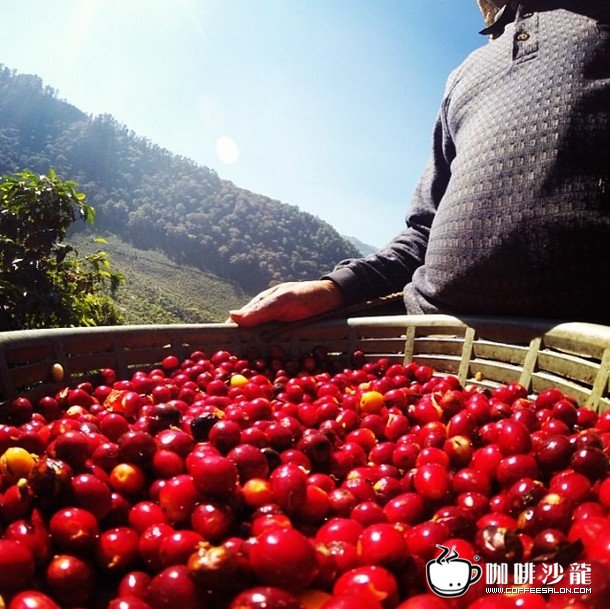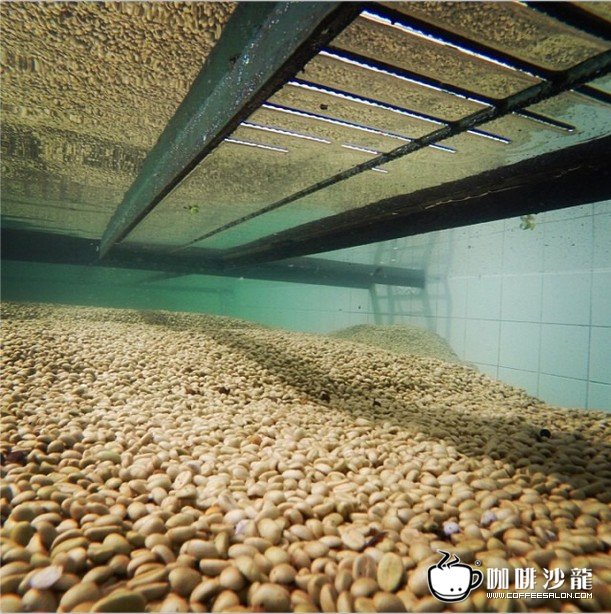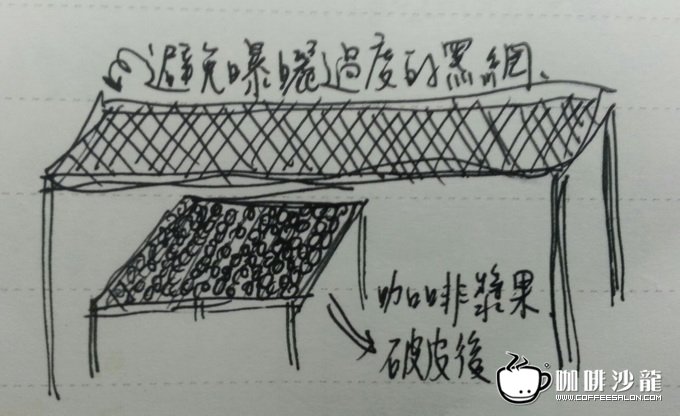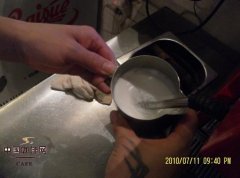Various practices used in the manufacturing process of raw coffee beans.
I believe that when you browse the menu of individual coffee in the cafe on weekdays
Often see "washing", "sun", "honey treatment" and so on about the "treatment method" description.
What on earth is "treatment"?
"Process" refers to the various practices used in the production process of raw coffee beans.
More specifically, it focuses on how to remove the exocarp and pulp of ripe coffee cherries.
The process of turning into only raw beans.

Red Catuai & Yellow Catuai ripe coffee berries of Incht Manor in the sun > peeled and shelled
In the earliest days, coffee was treated by the sun.
The process of insolation is relatively simple in the early days.
Send the whole cherry berry directly to the suntan.
After reaching the ideal dry humidity, peel and peel again.
This method is popular in Africa because of the lack of water resources.
Sun flavor: miscellaneous flavor and high sweetness
Metaphase: washing (Washed Process)
Process: picking bean in canal > breaking skin > fermentation > cleaning > (secondary infiltration) > drying
After the development of various technologies and the establishment and application of water resources and facilities
Nong people began the treatment of washing.
In the Central American region, which is rich in water resources, the water washing method is almost often used.
Washing flavor: obvious acid quality, clean and bright flavor
Washing process:
The first way: pick beans through water channels
Coffee berries flow through the water channel (much like the floating river in Mara Bay)
In this way, we can screen out light beans, leaves and worm-eaten beans, as well as overweight stones. Wait.
Second way: broken skin (De-pulp)
The third way: remove the pulp (fermentation) in the fermentation tank
Coffee berries after peeling, soaked in a fermentation tank
Wait for the pericarp, pulp and pectin to decompose after fermentation in the damp environment.
Fourth way: cleaning (clean)
Fifth way: drying (using a sun or dryer) (sun-dry or dry machine)
Daisy adds:
Currently found in some boutique estates in Guatemala
In the process of washing, if the raw coffee beans are washed and soaked in the sink again (after at least 12-24 hours), and then dry, the quality and flavor of the coffee will be greatly improved. As a result, this process is gradually being used, known as "secondary infiltration (soaking)".

In the Incht Manor, the scene of the second infiltration trough!
(waterproof camera! Foul!)
Photo source: http://instagram.com/p/i9lplLCnnV/
Later period: a hundred schools of thought contend
-Honey treatment (Honey Process)
Process: picking beans > breaking peel (removing part of the peel and pulp) > drying fermentation >
In order to combine the cleanliness of washing with the sweetness of the sun, a process called "honey treatment" is produced.
After the coffee berry is peeled (if part of the exocarp and pulp is removed), it is placed on an off-ground shed (or African shed) to wait for the pericarp to ferment. Sometimes it is covered with a cover of canvas or gauze to prevent the beans from being overexposed during long-term fermentation.

XD of Daisy's hand-painted African shed
Beans treated with honey can be said to combine the characteristics of sun exposure and water washing.
The flavor is cleaner than that of sun-dried beans, and the appearance of beans is more symmetrical, but it can still show the bright acidity of coffee.
Duoer small supplement: even if it is honey treatment, the treatment process in different places is also very different. There are Heavy Honey, Red Honey with heavy fermentation degree, and Light Honey, Yellow Honey with slight fermentation degree. . The flavor and the difficulty of the production process are also different!
The above is the note sharing of coffee bean treatment! ( ~ Sorry it took a long time, XD)
But to remind coffee lovers ~
There is no direct difference between the advantages and disadvantages of different treatment methods.
Still need to know what kind of treatment the producing area and the manor are good at, and what is everyone's preference for coffee flavor, to taste each cup of coffee carefully!
By dole 2014. March. eleven
PS1.
This hand-made lesson notes share articles, a series of articles quote GaBee. Mr. Lim Dong-Won 's handouts,
Oral materials, GaBee. Official information, as well as notes and materials collated by Duoer.
Please indicate the source before reference or citation. Thank you!
PS2.
Note is incomplete, wrong, unclear, please do not hesitate to correct!
If you have any place for discussion, you are welcome to leave a message.
Author: Wu Xiaoling Eleanor Wu
Like coffee, like photography, like travel, like writing, like laughing, like to meet new people.
He has traveled to 17 countries and 72 cities, striving to become a cafe traveler.
Because I like coffee too much, I resolutely quit my high-tech job and flew to New York to pursue the dream of hot-blooded coffee.
Pushed open the door to the smell of coffee nearly a hundred times and visited 50 different cafes!
After returning to Taiwan, he continued to plow deeply in the coffee industry in silence.
Articles related to New York coffee books and boutique coffee are currently being written.
Important Notice :
前街咖啡 FrontStreet Coffee has moved to new addredd:
FrontStreet Coffee Address: 315,Donghua East Road,GuangZhou
Tel:020 38364473
- Prev

Detailed explanation of semi-automatic coffee machine for beating milk foam and flower drawing
It is often seen that many friends are discussing the problem of flower drawing, and some friends have suggested that the most important thing is to make a good jar of milk foam. I quite agree with this view. To pull flowers well, the most key factor is the milk foam, in fact, the method of flower drawing is relatively simple. So how to make a good jar of milk foam? In fact, this thing can not be taught with words and images.
- Next

Italian coffee pull flower coffee pull flower preparation and process
Espresso Coffee: Since the Latte coffee we use to make flowers is made from Espresso, a cup of extracted Espresso is also essential, after all, this is a cup of drink to be imported rather than purely ornamental art. In this way, in the process of doing the practice of pulling flowers, there are more than 10 cups of failure.
Related
- What is the meaning of lactic acid fermentation with coffee bean treatment?
- How to judge the state of foam by sound?
- How does the latte pull out the unicorn pattern? Come to get for a little trick to improve the flower pull!
- Will flower pulling affect the taste of the latte?
- Do you know the history of coffee?
- The difference between honey treatment and sun washing what is raisin honey treatment?
- What kind of milk can a novice use to make coffee foam to keep the foam longer? The correct method and skills of milking tutorial sharing
- Why do washed coffee beans taste sour? Flavor characteristics of washed Coffee
- Introduction to the skill of how to practice the size and height of water injection around the circle of hand-brewed coffee
- How do beginners practice coffee flower drawing from scratch?

